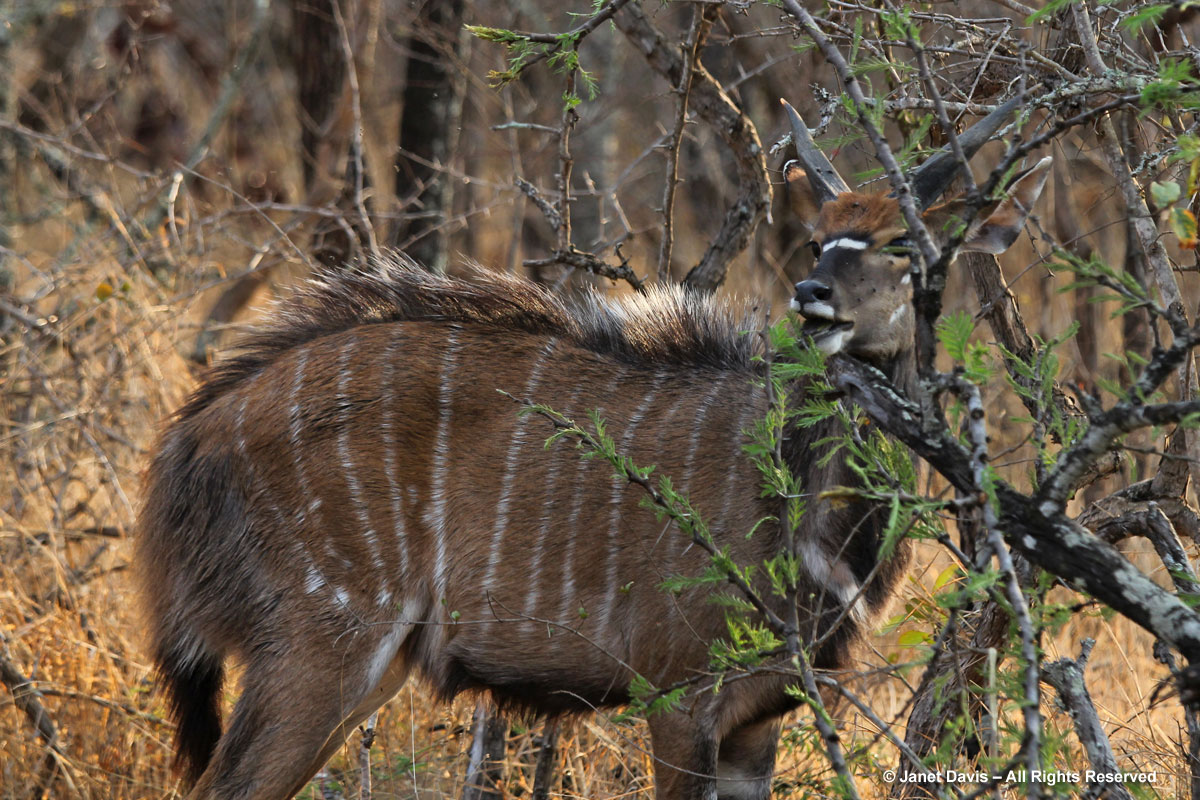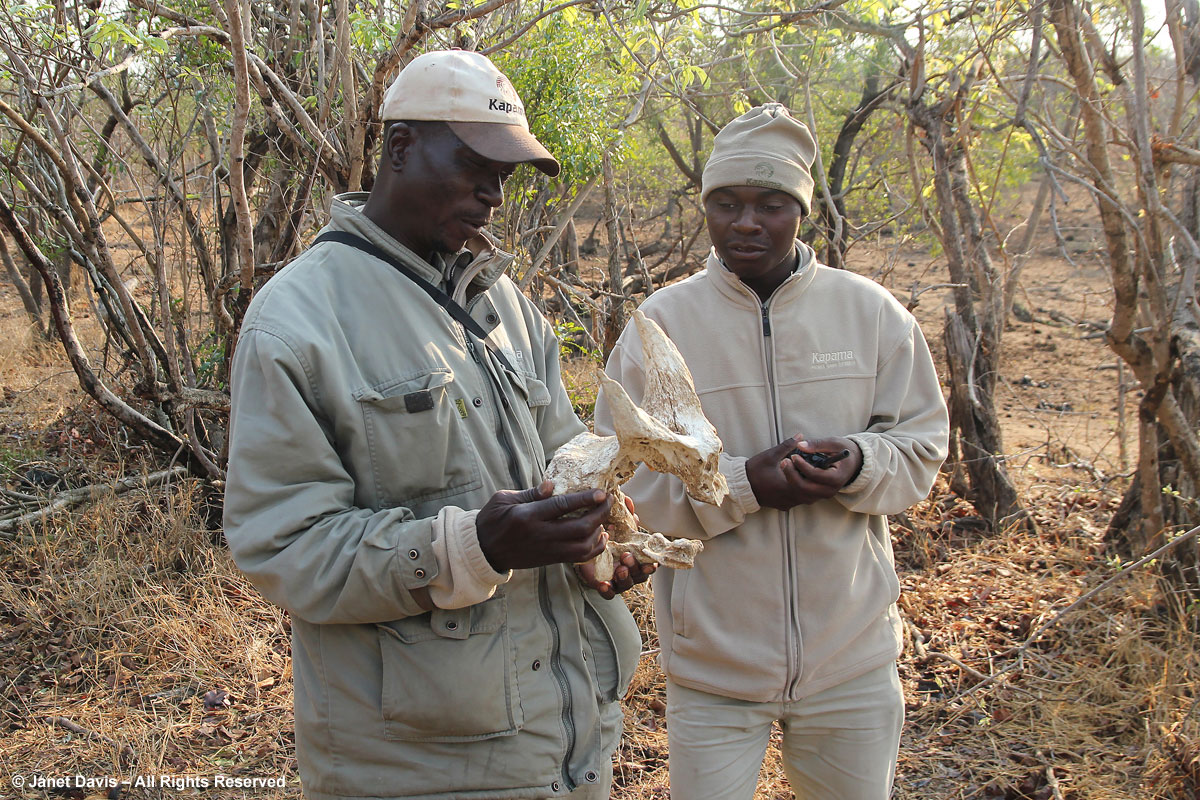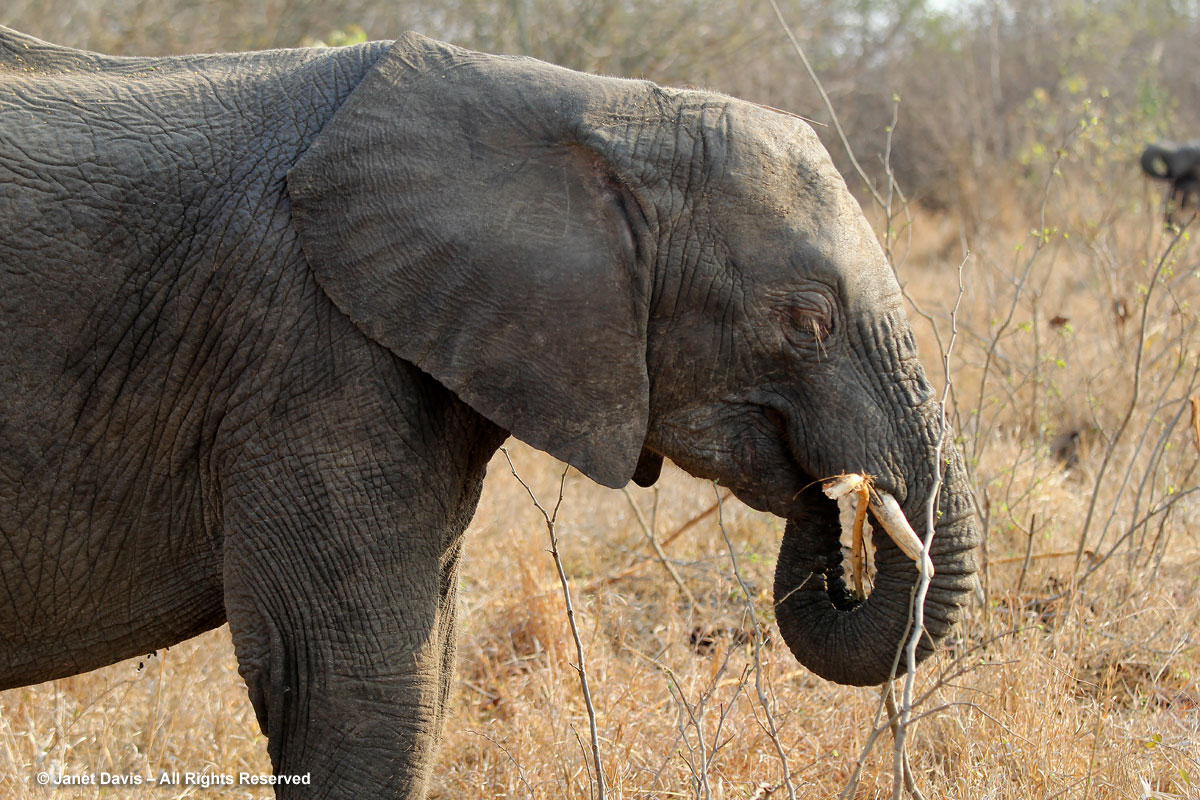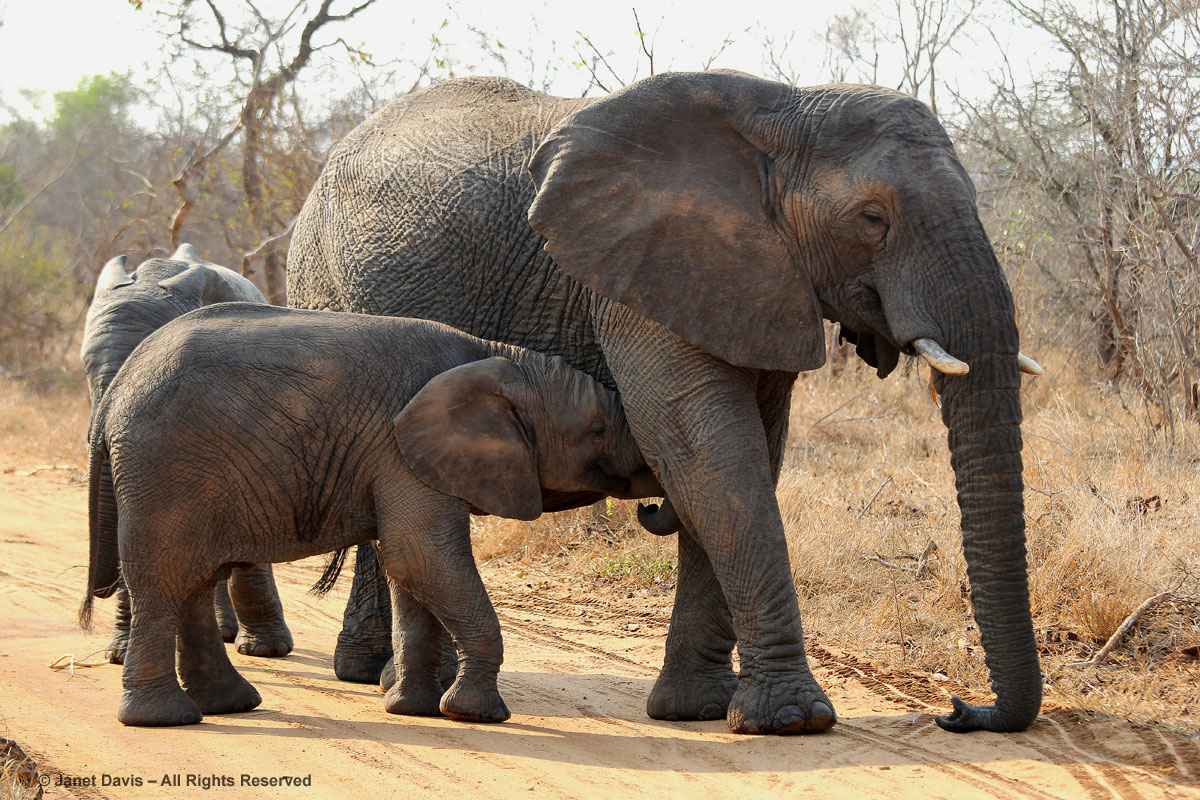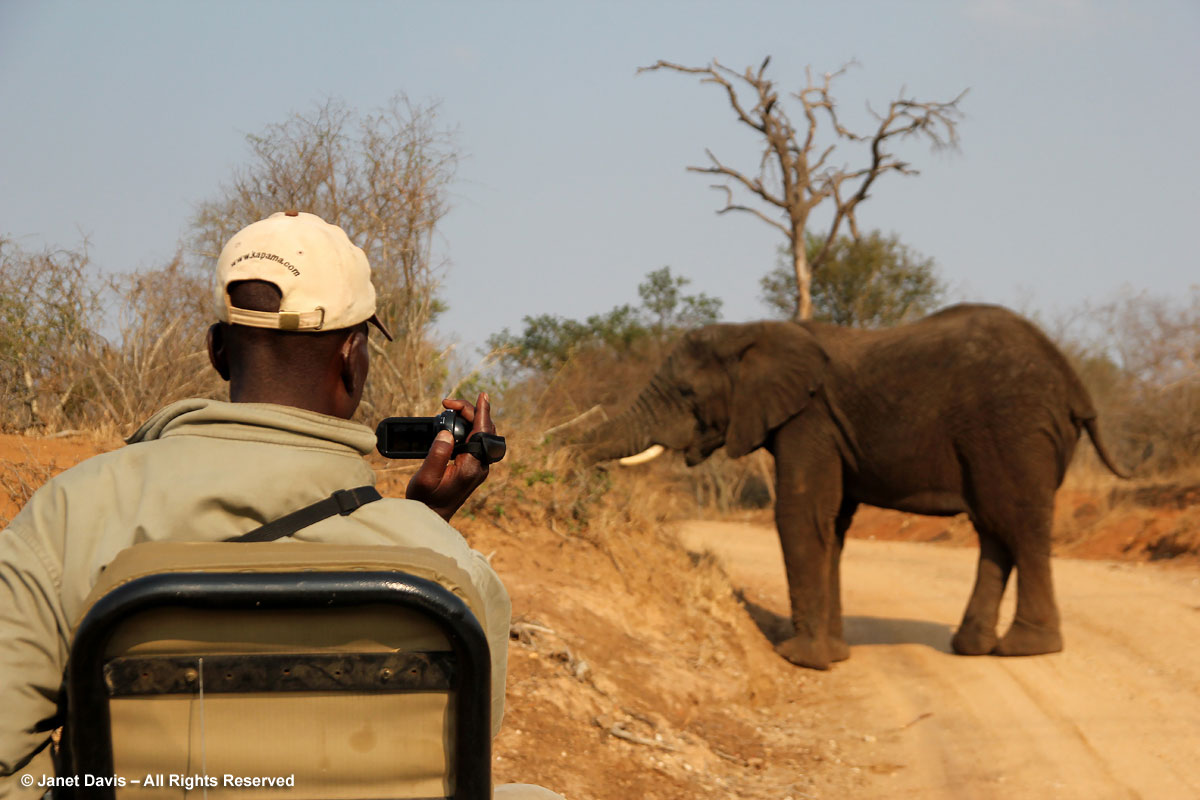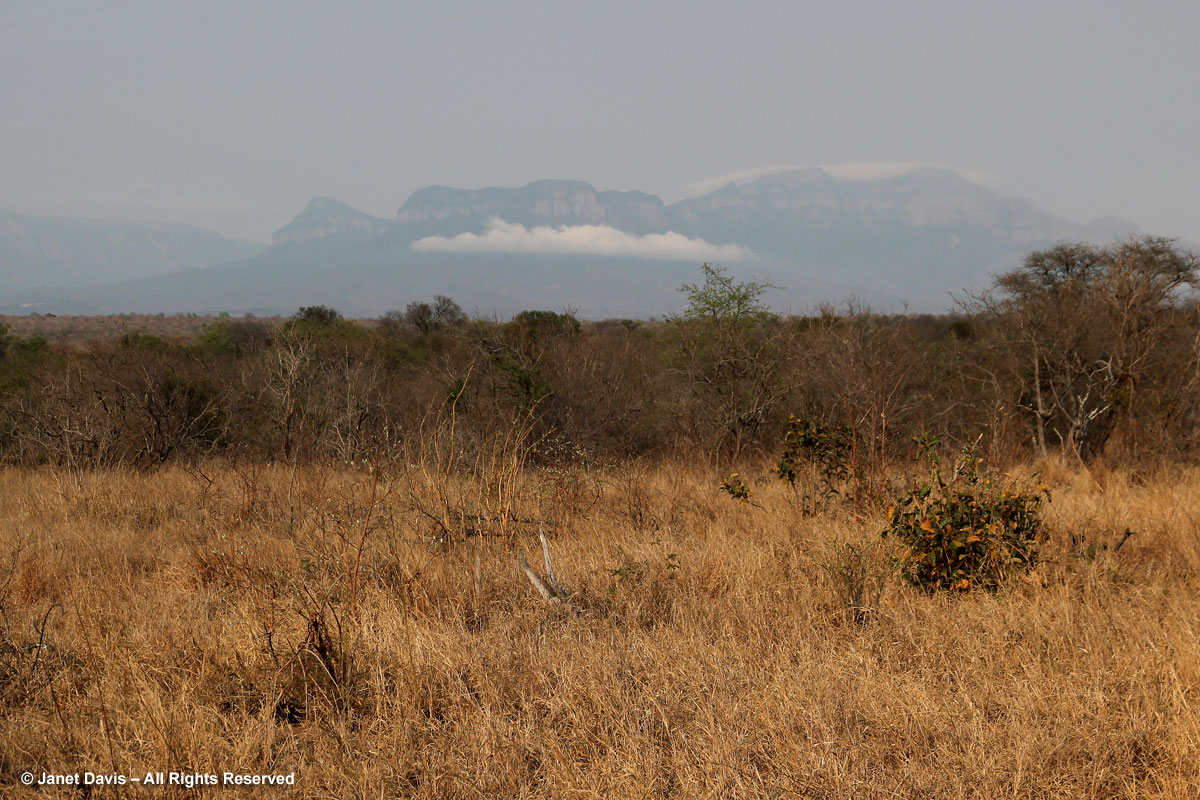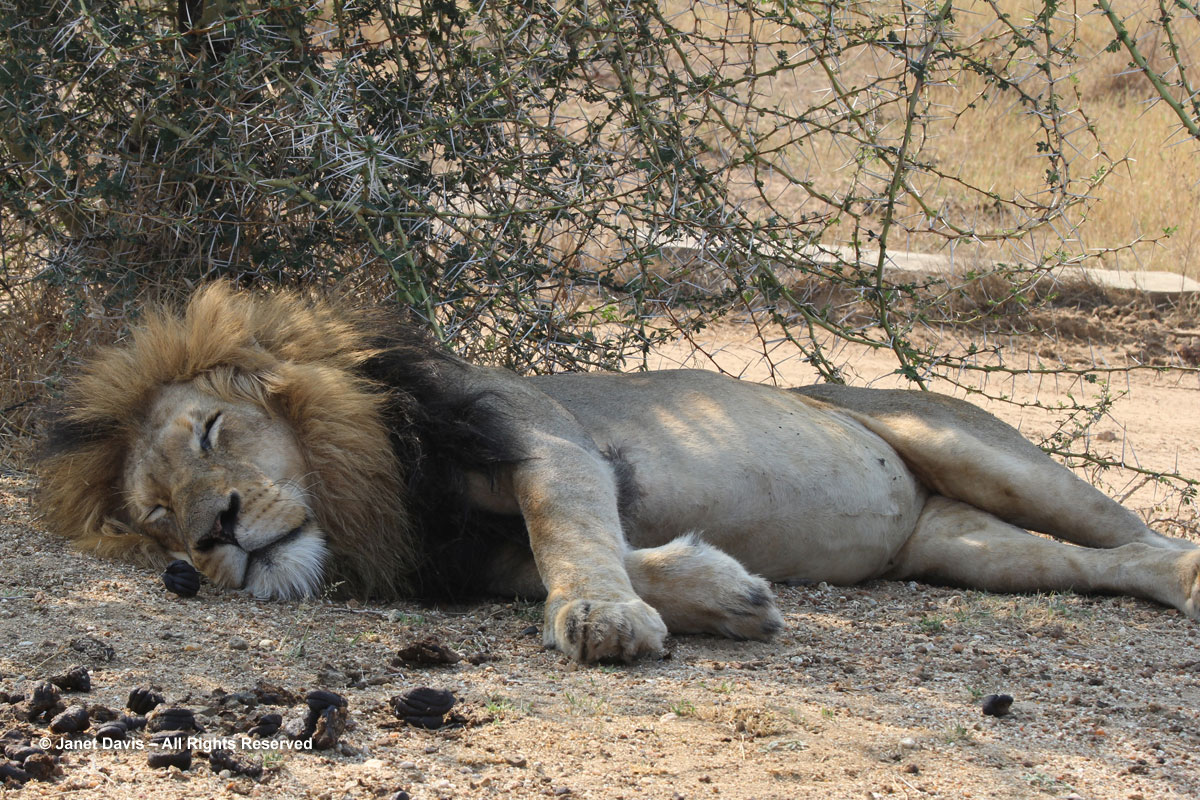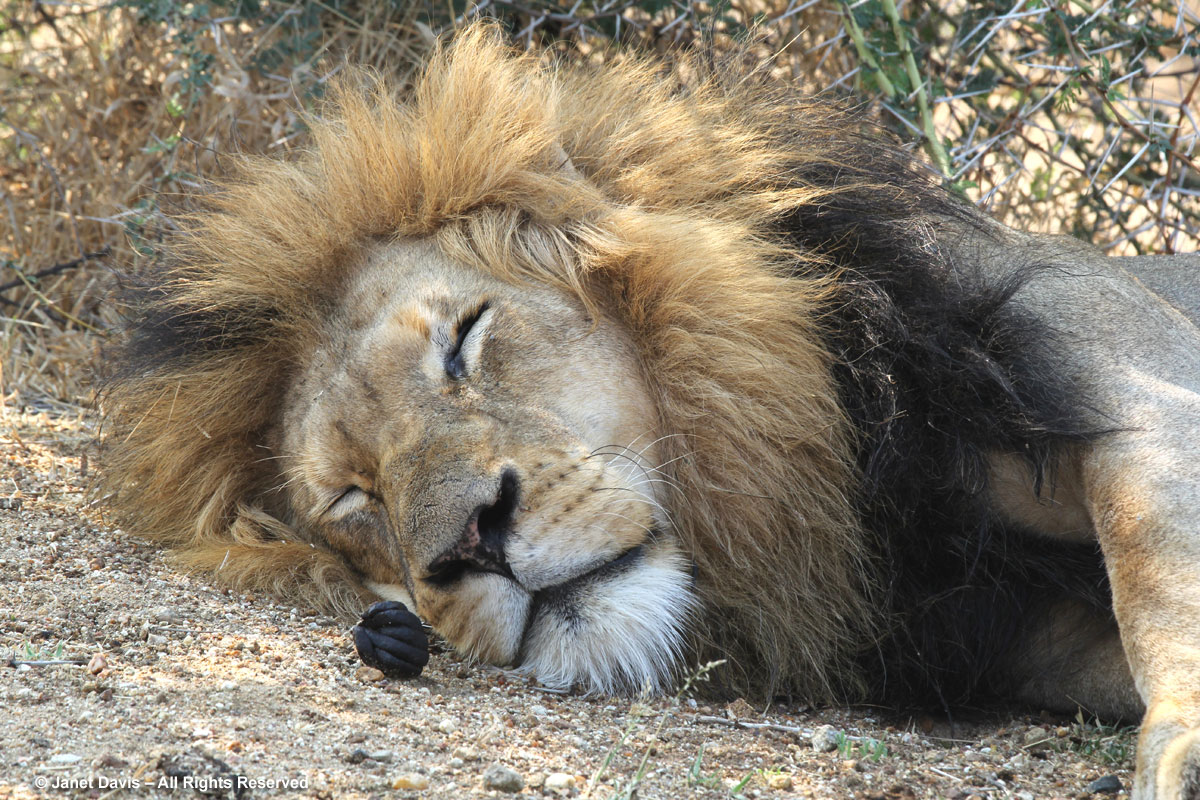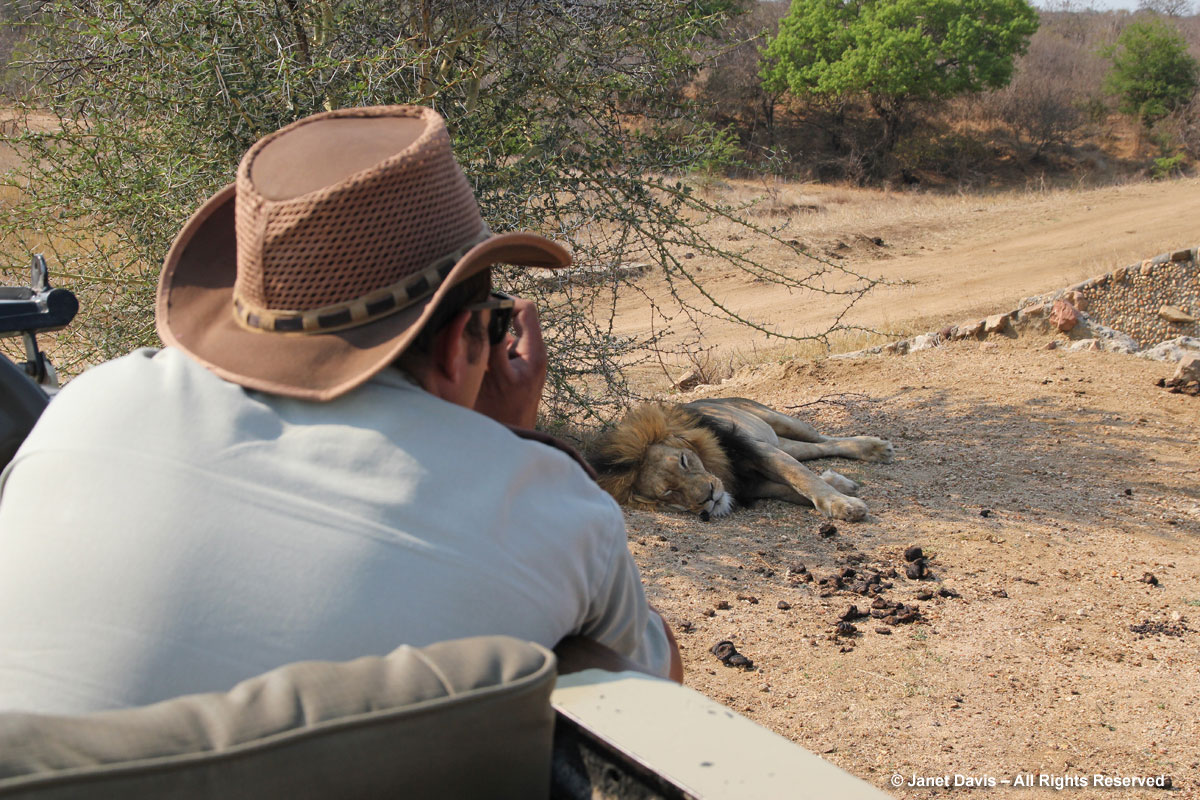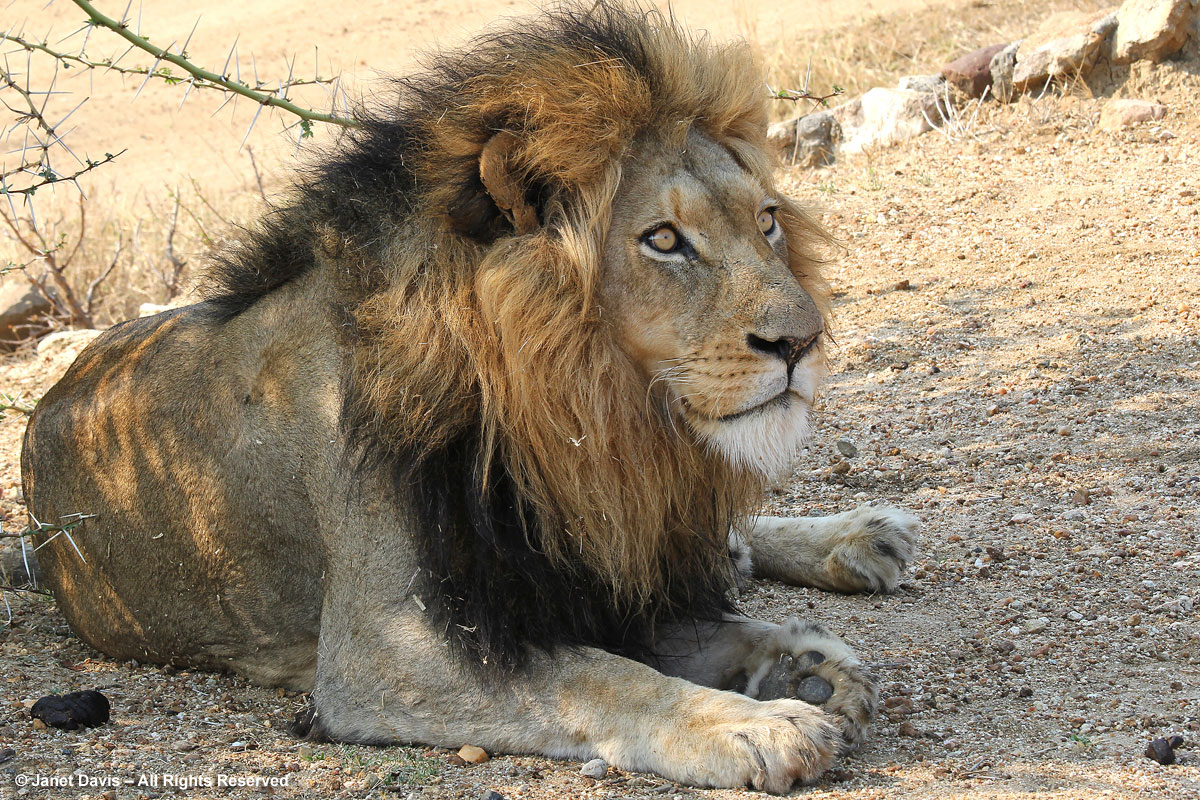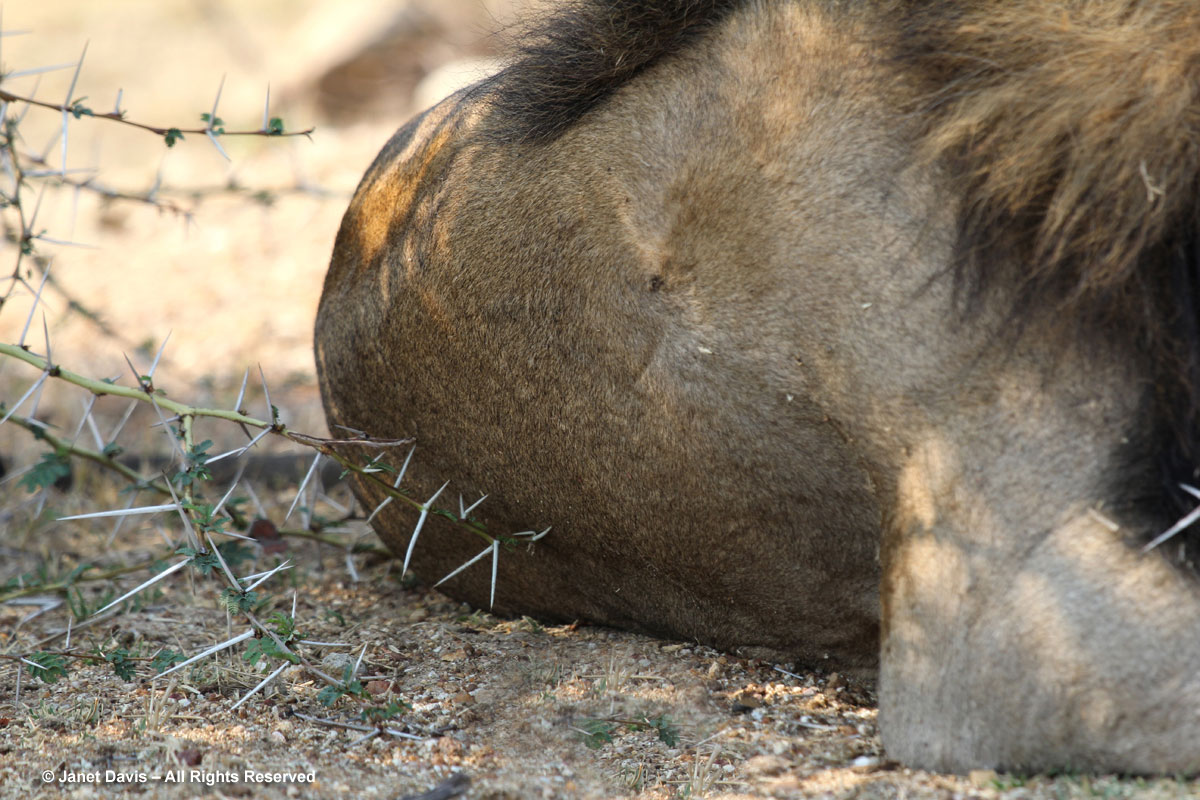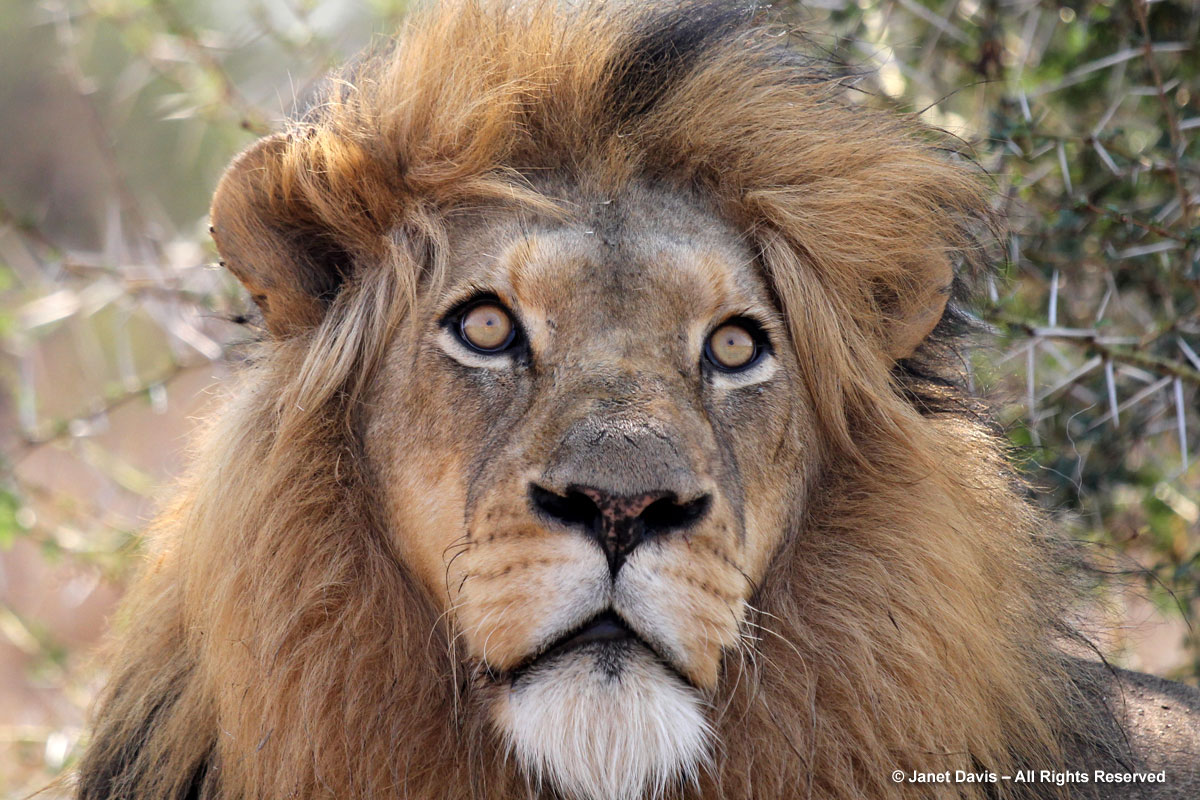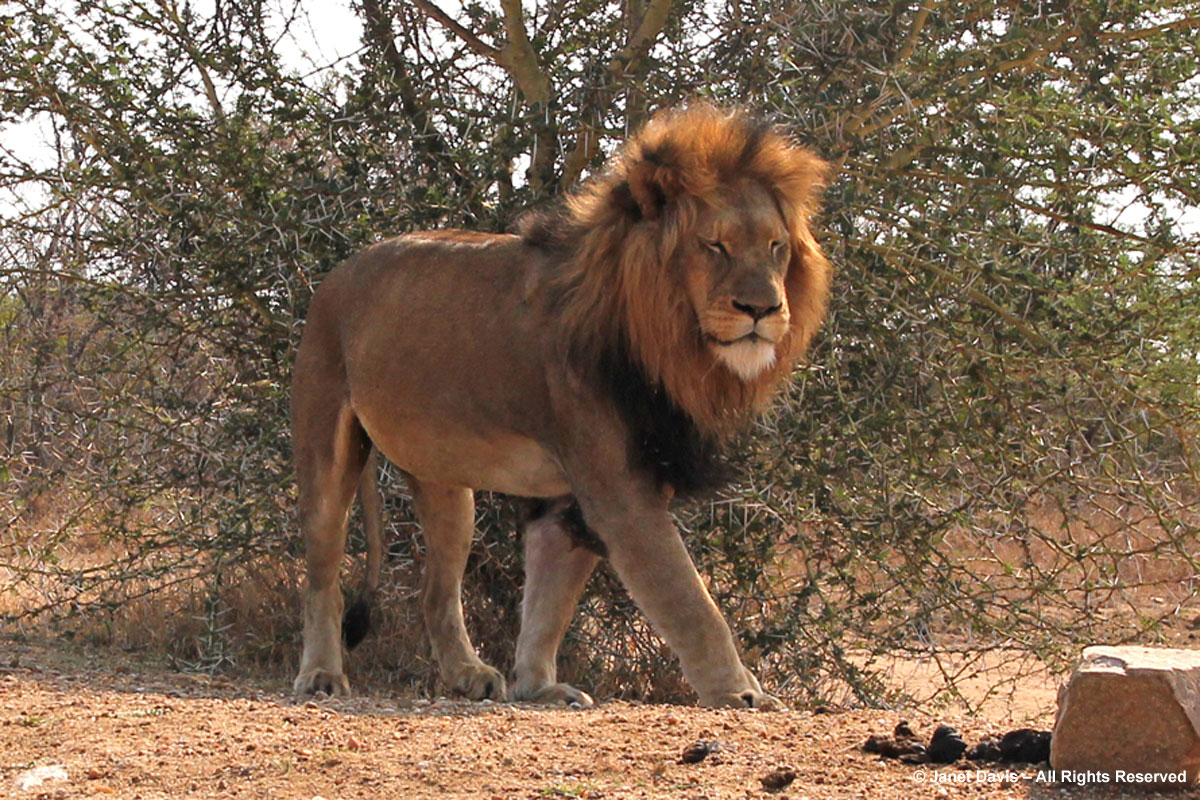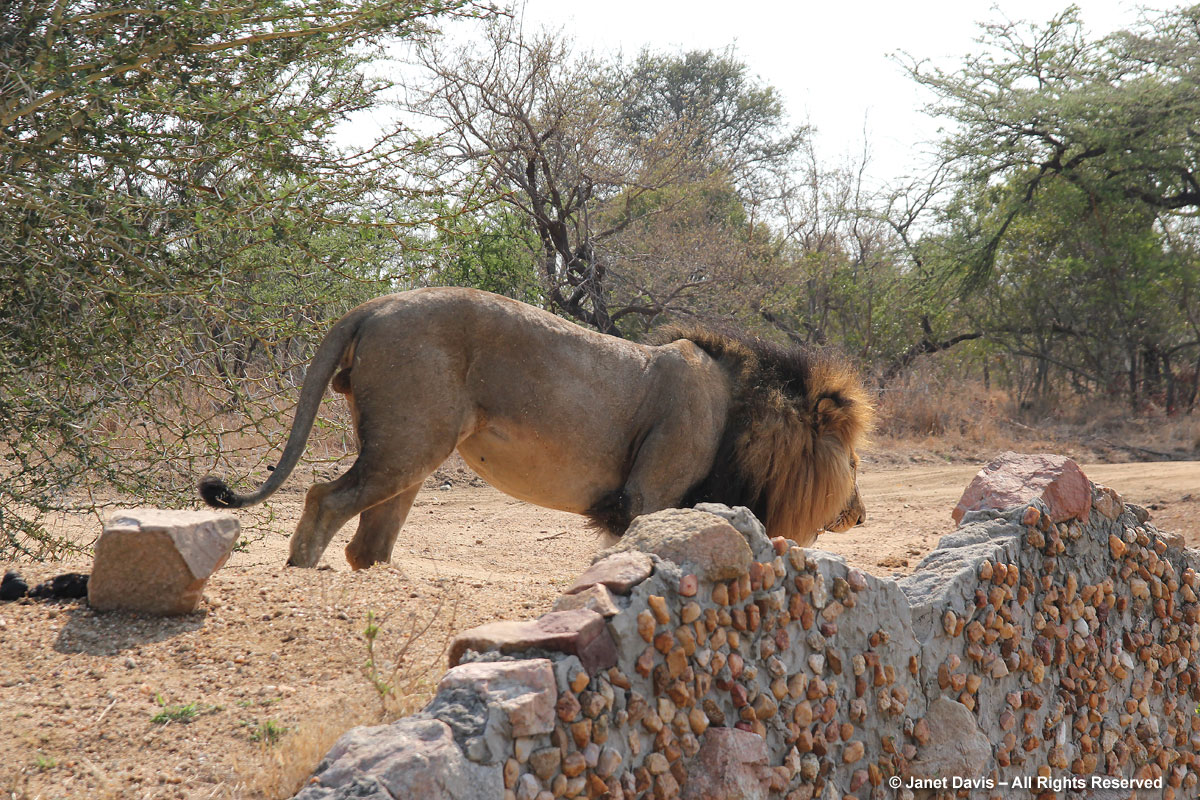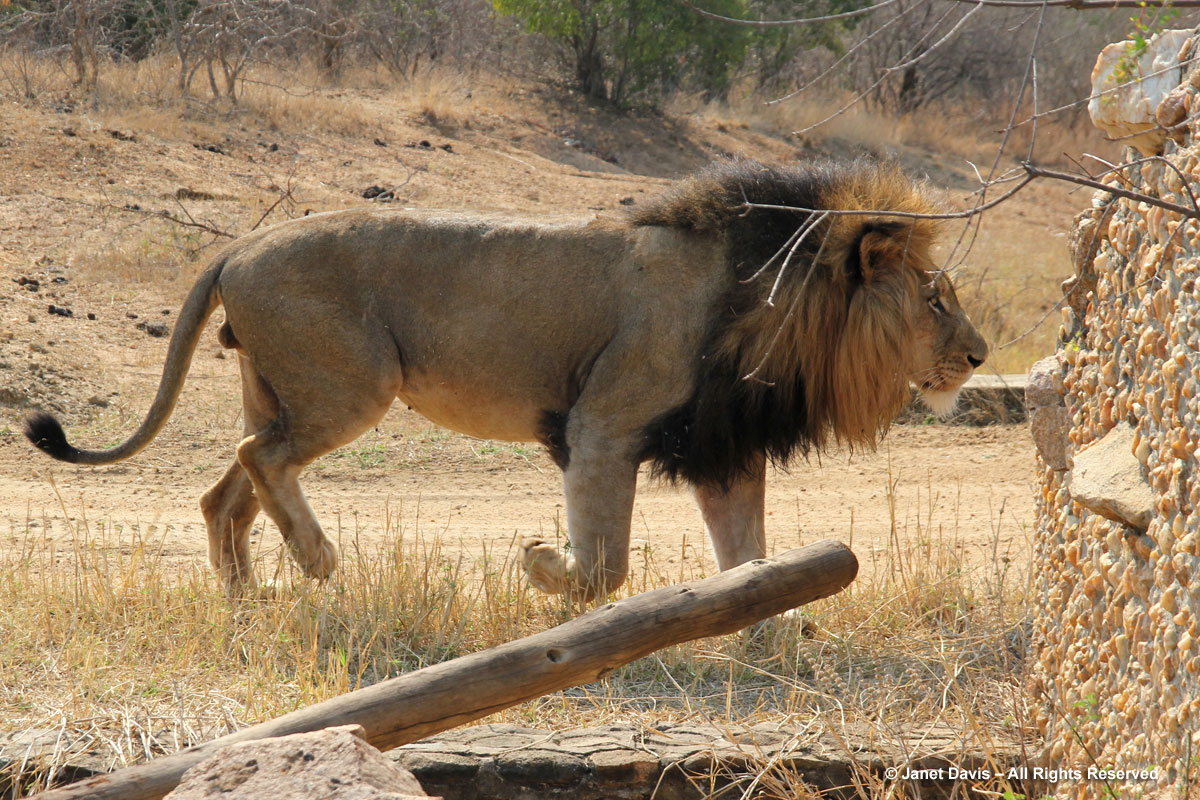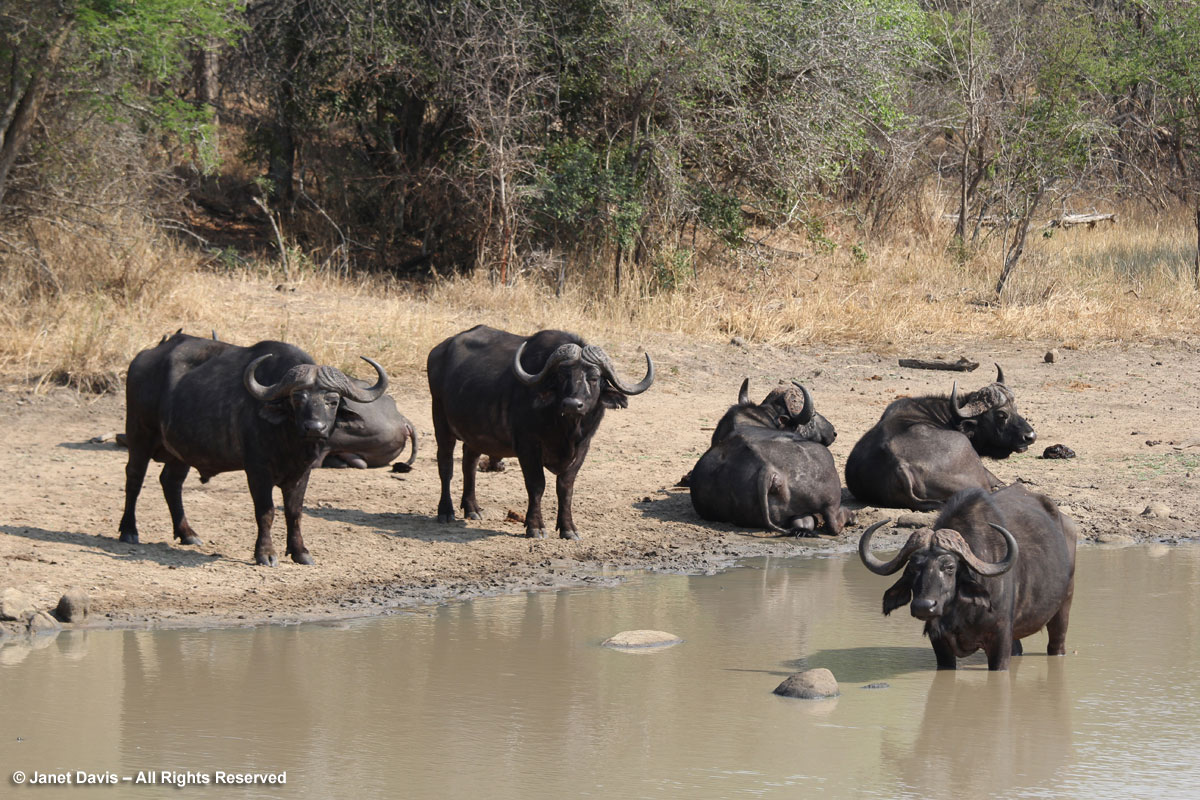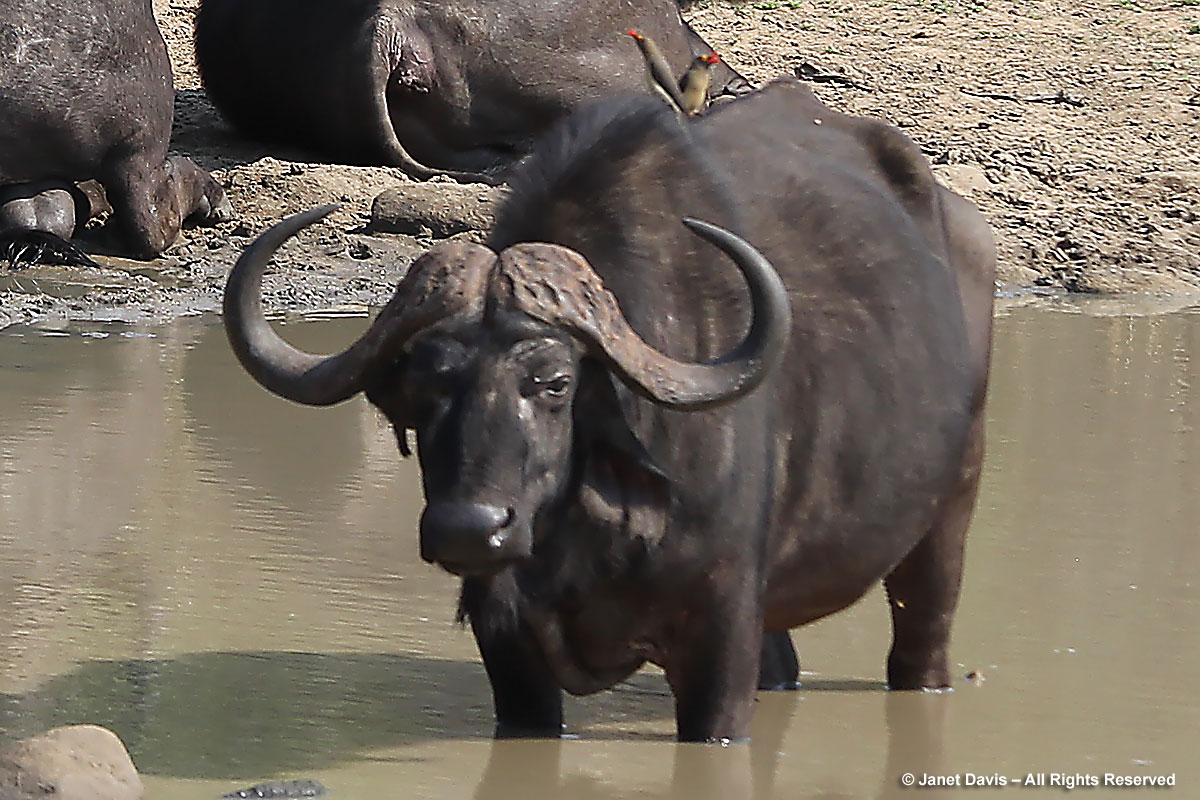It’s Day 4 of our South Africa Garden tour. After our first game drive yesterday at Kapama Private Game Reserve outside Kruger National Park in Limpopo, we’re raring to go for our second (full) day here and two 3-hour game drives. Following a 5 am wakeup call and a fast slurp of juice and a bite of biscuit (breakfast comes later), we’re in the jeep for our morning game drive. Sadly, we’re a half-hour late for sunrise over the bushveld, so no photos of that event, but the animals are already active and feeding. We pass zebras and giraffes…..
…..before coming upon a young male kudu browsing while observing us.
A few minutes later, while searching for tracks, Willis notices an animal skull in the bush. He examines it with another tracker, before proclaiming it a wildebeest.
Before long, we come upon an elephant noisily breaking small branches to eat. Its long, prominent eyelashes help deter blowing sand (and its own frequent dirt showers) from entering its eyes.
Soon we come upon the herd, all spread out in a field eating small brush. Then we see an elephant calf nursing, with other young elephants nearby.
Just 6 weeks after our stay at Kapama, an elephant birth would be described in loving detail by one of the rangers here.
Willis takes a moment to film a nearby elephant. Those rangers and trackers who wish to do so can contribute anecdotes or their photos to the company blog.
I have managed to find the video settings on both my cameras, and although I’m still very much a beginner, I’ve put together a small musical video of the elephants at Kapama with a soundtrack (Iph’indlela) by my favourite South African artist, the late Miriam Makeba.
After the elephants, it’s time to take a short break for our morning “coffee in the bush”. Dino and Willis unpack the thermoses and pour, while we enjoy a view of the Drakensberg mountains to the north. I could get used to this life!
In the vehicle again, we are thrilled to come upon a male lion (Panthera leo) sleeping under a thorn tree, its stomach bulging with last night’s prey. Dino tells us a lion needs to rest for 18 hours after eating a warthog.
Just inches from its nose is a small piece of dung that looks rather like a fanciful chocolate cruller. I’m not able to find a positive identification of the depositer later, but it makes me wonder if it was the warthog’s last hurrah….
Because Dino is closest, he offers to take photos of the lion for some of the passengers. He tells us that Kapama has 29 lions in total, with 2 dominant males, father and son. This is the son, and while his father is still the alpha male, that dynamic will change in time and the son will control the females in the pride.
All at once, our lion awakens and immediately looks up to the sky, where buzzards are circling. In a lion’s world, that might mean a fresh kill that needs to be investigated. 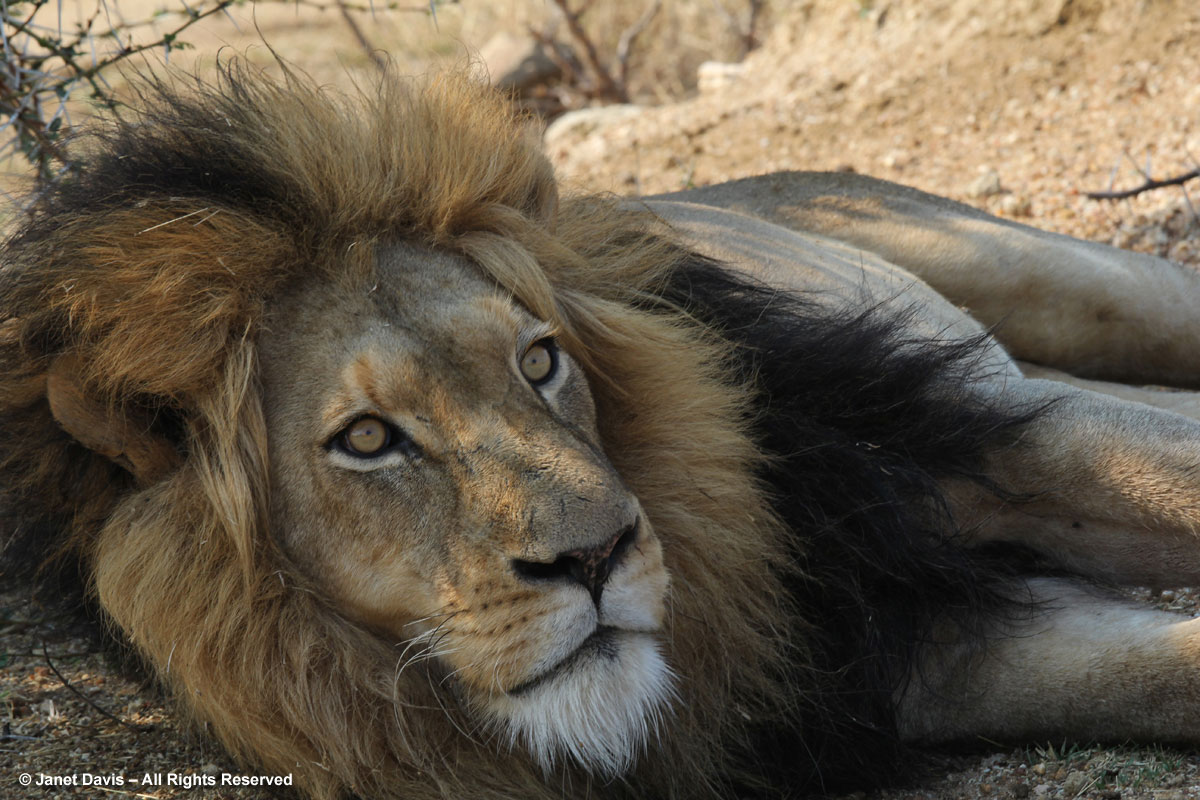
His dark mane is an evolutionary advantage – and not one that every adult male lion shares. Turns out that black fur is eye-catching for females in estrus who might not have been chosen to be “guarded” by Sir Leo, who can only watch one female at a time. The other females have their pick of the males for mating and it has been theorized that those lions whose manes contain more black – therefore express more testosterone – are considered a better bet for fathering their young.
He seems completely oblivious to the acacia thorns piercing his hide.
And his golden eyes are beautiful.
But finally, he stands and we all take an involuntary shift backward in our seats. Though we are not far away and it would be an easy leap into our jeep, the animals here have grown accustomed to the safari vehicles. Still, we are cautioned to wear neutral clothing, to be quiet and not to stand up or otherwise draw attention to ourselves. Respect for these animals and their environment is paramount.
He saunters away past the beautifully-decorated culvert wall. Culverts, of course, are important during the rainy season in order to keep the roads passable.
And down the road, heading for the buzzards or maybe just a quieter spot to snooze.
As I have two cameras, I’ve been videotaping our lion encounter with one, and have set my video to a popular song recorded by one of my favourite groups. (More on this song after the video).
A short detour here into music history. My little lion video features The Lion Sleeps Tonight by Toronto’s wonderful a cappella group The Nylons, as they sounded in 1982 before losing their brilliant, soaring-voiced tenor Marc Connors to AIDS in 1991. There’s a fascinating back story about this song. Long before the Tokens recorded their best-selling 1961 version (which the Nylons channel here), it was sung by folksinger Pete Seeger as Wimoweh based on what he heard when listening to Solomon Linda and his Evening Birds sing it on a 1939 recording. What Linda was singing was actually the word “Mbube”, pronounced (approximately) mee-boo-beh and was based on a traditional Zulu song. The long, tortuous story of what happened to that song, from Solomon Linda to The Lion King has appeared in many forms, but the most thorough and fascinating is Rian Malan’s exhaustive profile in Rolling Stone magazine in May 2000.
As a postscript to this song’s history, after my 2007 safari to Kenya and Tanzania, I made up a YouTube video of the parks we visited and put it to music with Miriam Makeba singing ‘Mbube’, in a fancified version of Solomon Linda’s original Zulu song.
Feeling content after our lion sighting, we are delighted to see a herd of Cape or African buffalo (Syncerus caffer) at a watering hole on the way back to the lodge. Dino tells us that when they’re not grazing, they like to lie in the mud or be in the water all day.
And we notice the red-billed oxpeckers (Buphagus erythrorhynchus) crawling over the buffaloes. Insect-eating birds, they’re looking for blood-engorged ticks on their host’s body.
Now it’s time to head back to the lodge for our own breakfast. The temperature has warmed and a swim in the pool is in order for later. Driving through the bushveld at Kapama is so much fun, I compile a little video giving a flavour of the ride — and of course it has to have music, again by South Africa’s “Mama Africa”, Miriam Makeba. (It doesn’t really correspond to our drive here in South Arica, since Hapo Zamani is Swahili, the language of Kenya and starts out “Once upon a time….” But never mind.)

